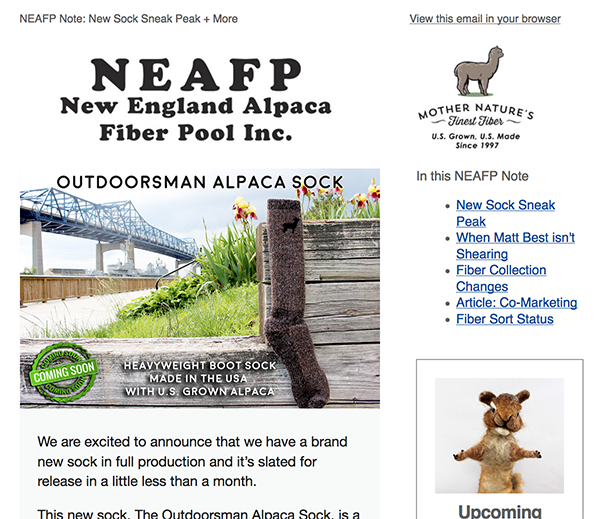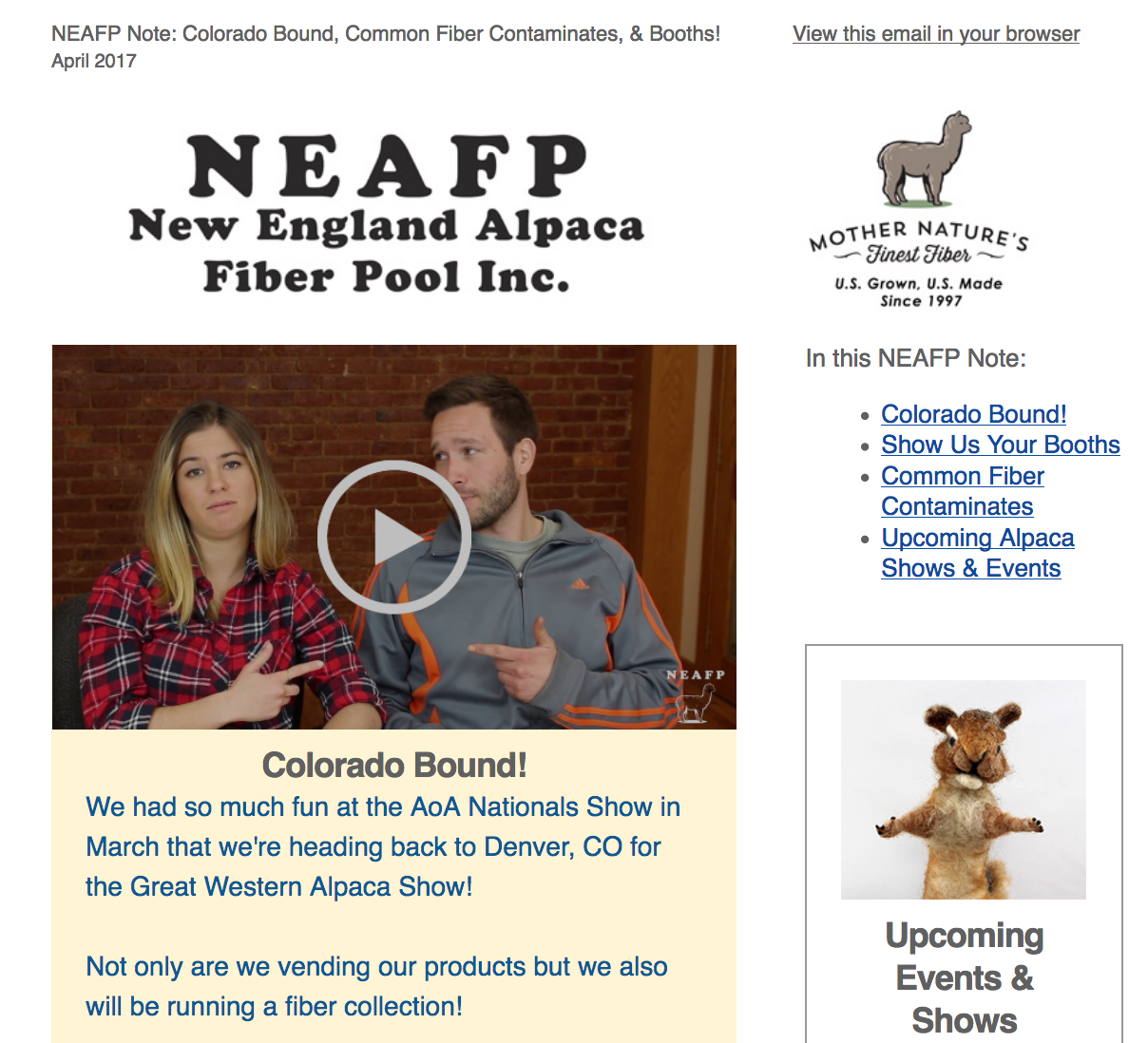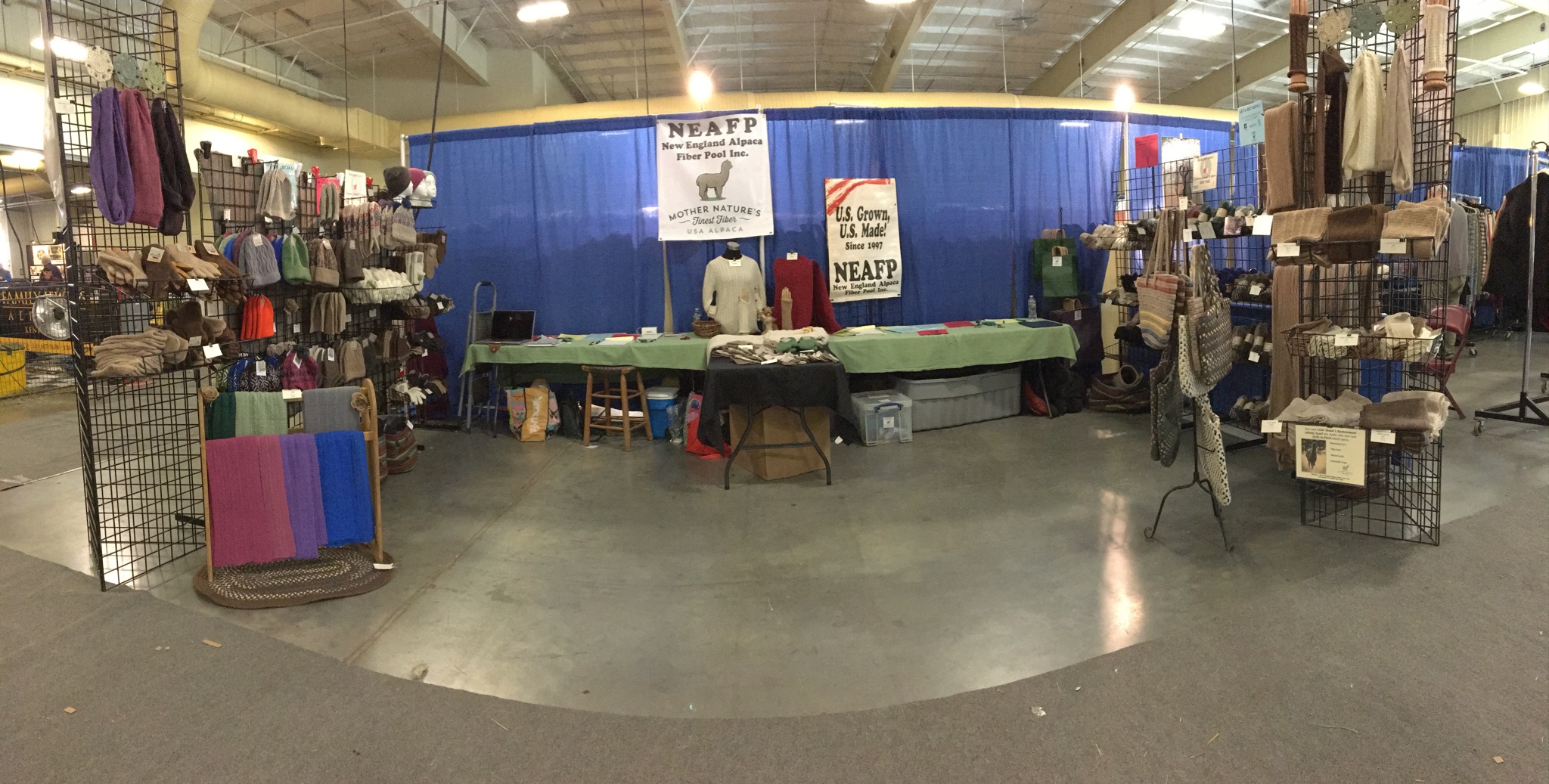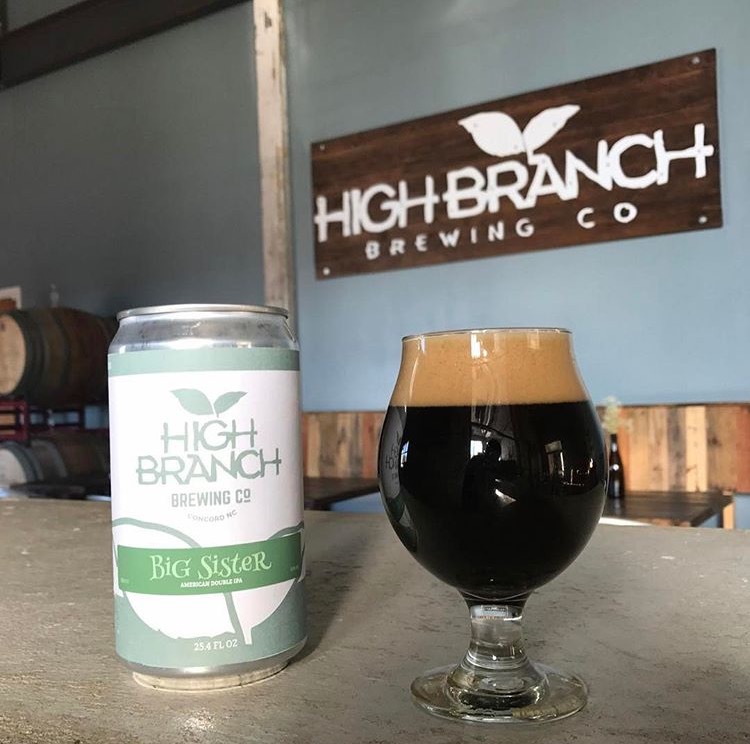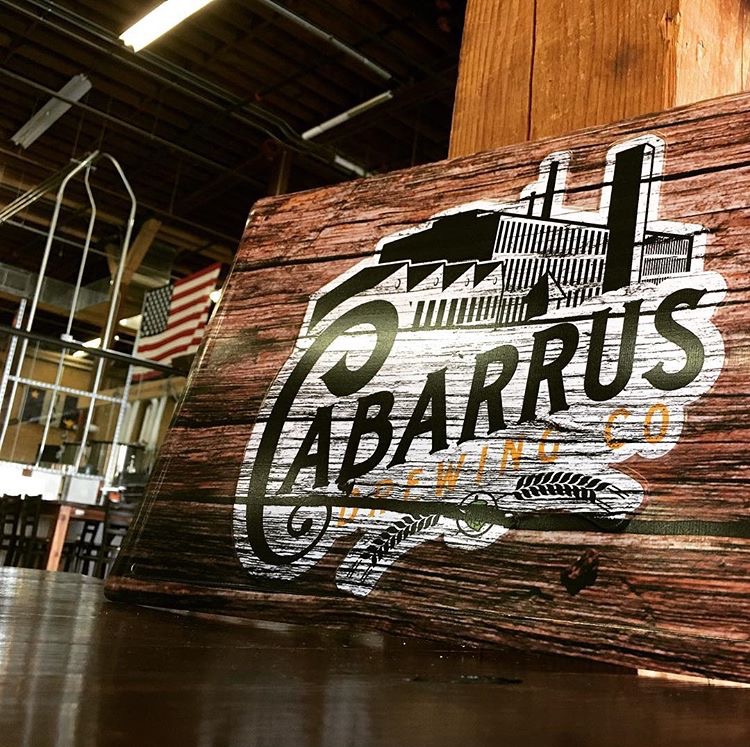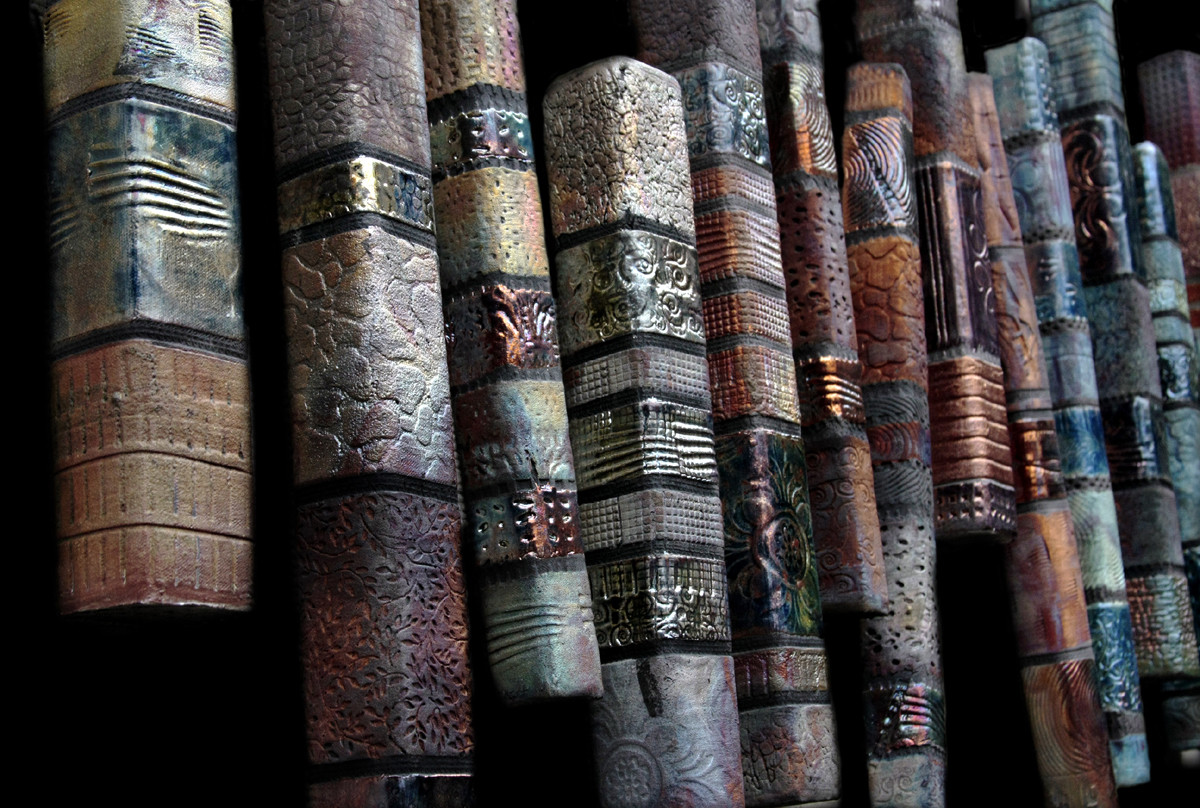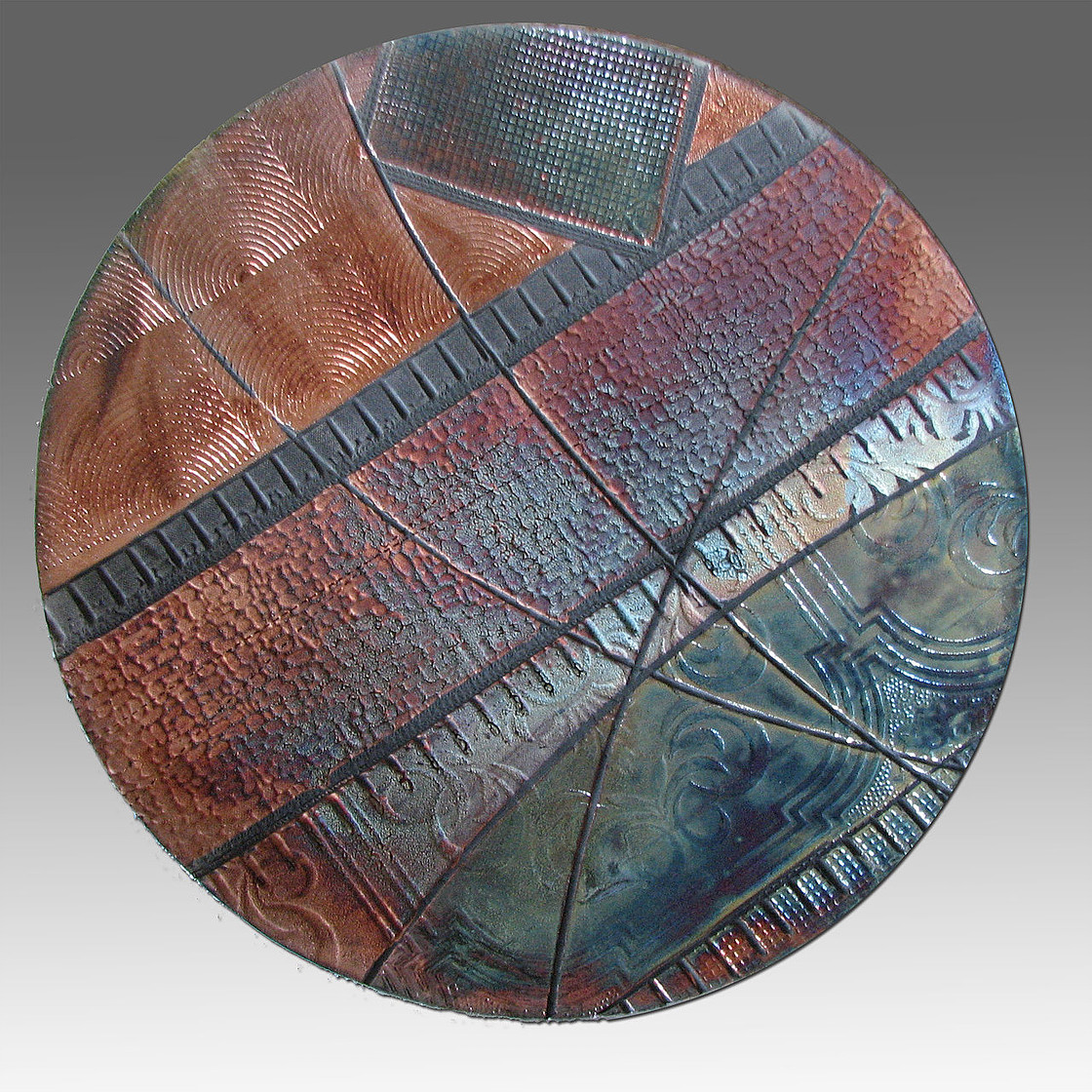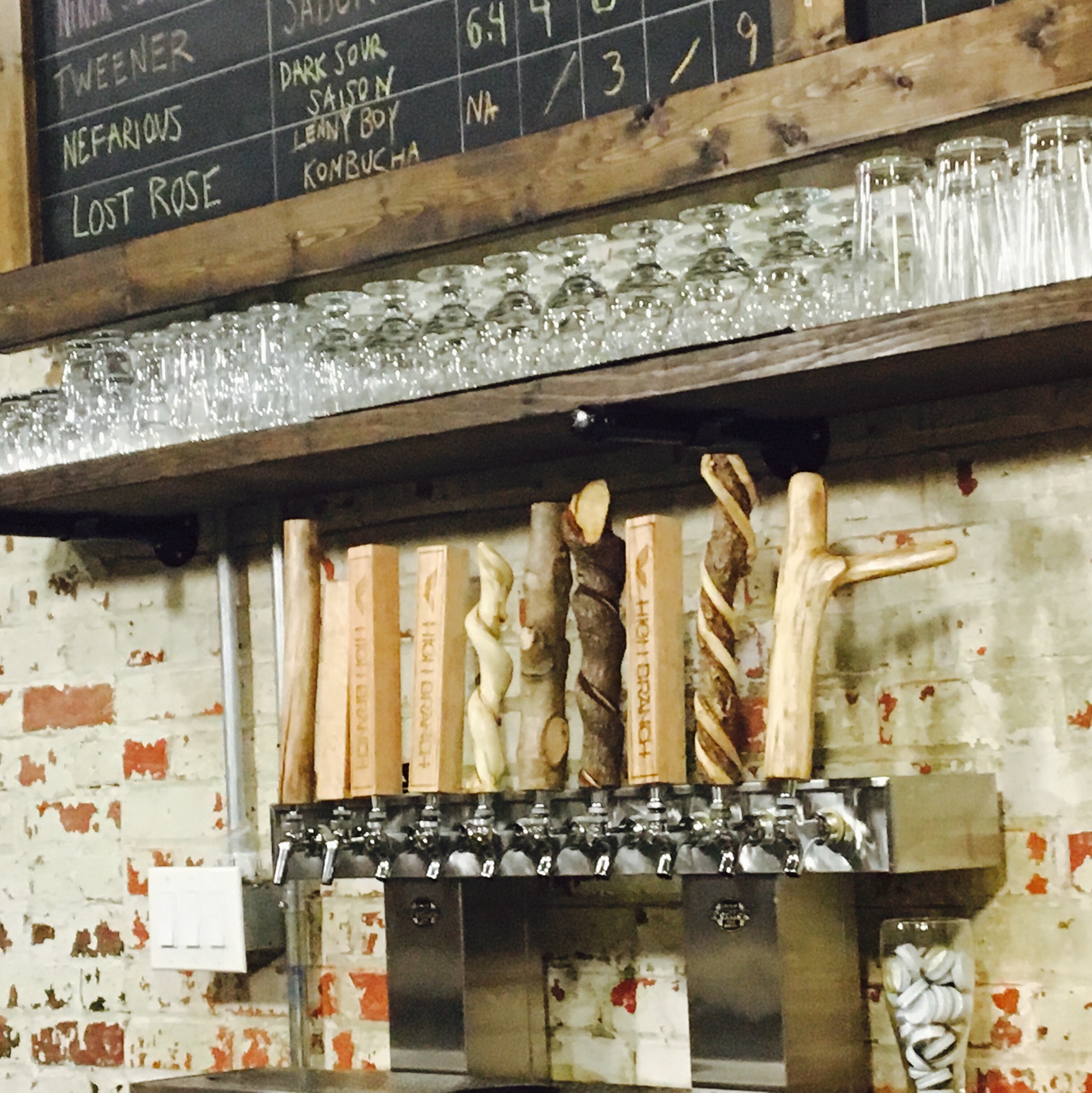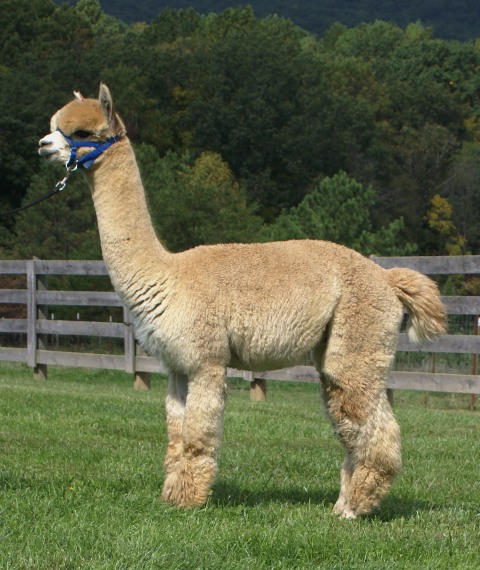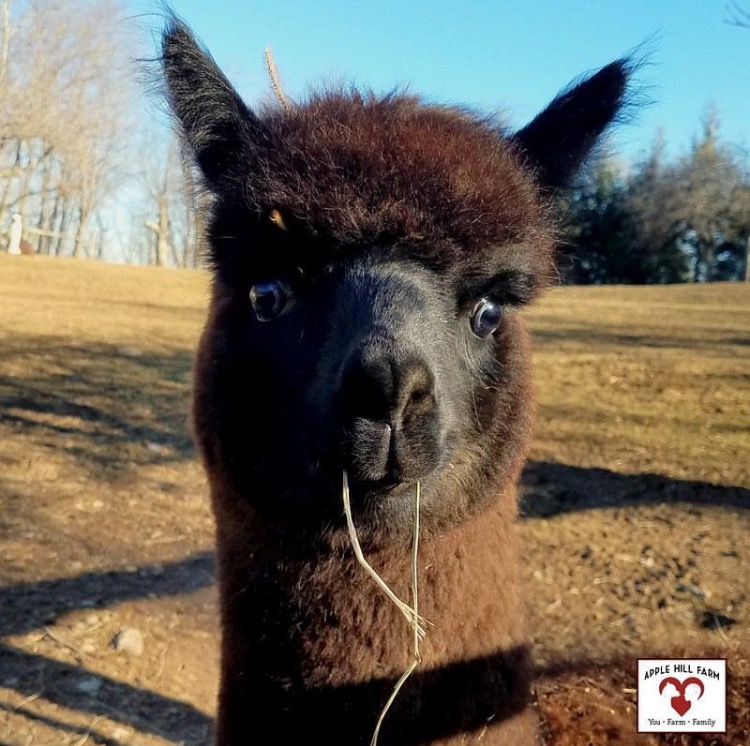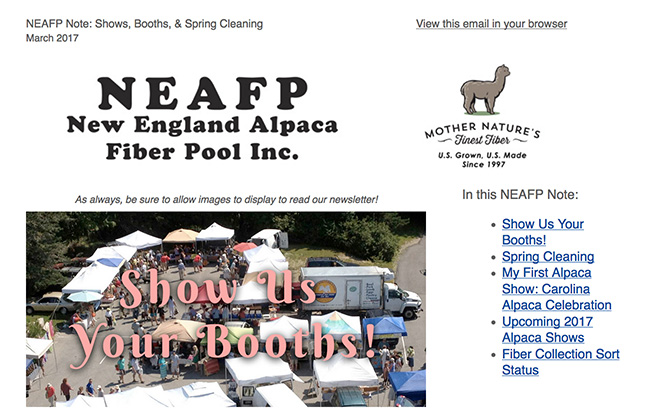Recent Blog Posts
-
01/17/2025Reviews: What People are Saying About The Survival Sock!
-
09/13/2024Download A Free Handwear Informational Print Out!
-
09/13/2024NEW Downloadable Content: Know Your Alpacas! Coloring Page
-
08/16/2024NEW Downloadable Content: National Alpaca Farm Days Word Search
-
06/21/2024VIDEO: What to Expect When You Submit Your Fiber to NEAFP
-
05/24/2024VIDEO: Getting Started Submitting Alpaca Fiber
-
05/24/2024NEW Downloadable Content: Memorial Day Coloring Page
-
05/03/2024Do I need to skirt my fiber before submitting to the fiber pool? NEAFP TV S01 E01
Alpaca Coloring Pages
- Happy Memorial Day 2024: Alpaca's Grazing
- Winter #1: Build a Snowman Activity
- Winter #2: Extreme Sports
- Valentine's Day: Alpaca Wedding
- St. Patrick's Day: Leprechaun
- Spring: April Showers
- Summer: Beach Day
- 4th of July: Colonial Alpacas
- Summer: Farmer's Market
- Fall: Apple Picking
- Halloween #1: Costume Contest
- Halloween #2: Spooktacular Halloween
- Thanksgiving #1: Giving Thanks Activity
- Thanksgiving #2: Pilgrim Alpacas
- Christmas #1: Deck the Halls
- Christmas #2: Santa's Workshop
Alpaca Fact Series
Business Resources
- Article: Email is still a MUST DO for all Alpaca Farms
- Article: Off the Beaten Path Event Ideas on the Alpaca Farm
- Download: Sock Photo Download Folder
- Graphics: Shop Small this Holiday Season
- Article: Form Follows Function: Dressing for Fall and Winter 2020
- Graphics: Sock and Handwear Comparisons
- Article: A Change in the Seasons: Farms Continue to Adapt into the Busy Harvest Season
- Graphics: How to Support Alpaca Farms
- Graphics: Alpaca Fiber Properties
- Article: Customer Retention: Building Customer Loyalty for your Ecommerce Business
- Article: Harnessing Storytelling to Market Your Business
- Article: The New Normal and a Renewed Support for U.S. Alpaca
- Article: Use Gift Cards to Increase Sales
- Article: Virtual Farm Tours: Bringing People & Alpacas Together in the Virtual World
- Graphics: Get the Most out of your Fiber Harvest
- Graphics: Alpaca Knitter's Yarn Guide
- Article: Mike and Sean's Adventure in Retailing
- Article: Harnessing Holiday Sales Momentum into the New Year
- Graphics: U.S. Alpaca Holiday Gift Guide
- Graphics: Small Business Saturday Resources
- Article: Tools and Topics for Implementing Healthy Soil Agriculture
- Article: Successful Social Media Marketing for Alpaca Farms
- Article: Agritourism on the Alpaca Farm
- Article: Finding Success at Fall and Winter Markets
- Article: Brand Identity & Your Local Community
- Article: Social Media: Alpacas are STILL Seriously Trending
- Article: Let's Get Personal: Expanding your Inventory with Product Personalization
- Article: Part 2: Promoting your Brand Online through Product Styling
- Article: Promoting your Brand Online through Product Styling
- Article: 7 Old School Ways to Spread the Word about your Event
- Article: 5 Ways your Open House can increase Future Sales
- Article: Top Alpaca Related Hashtags to increase your Reach!
- Article: Alpacas are SERIOUSLY Trending
- Article: How to Utilize CO-MARKETING
- Article: Farmers Share their Booths and Tips
- Article: Mobile Payment Survey Results
- Article: Product Photography Do’s and Don'ts
- Article: Driving Business After the Holidays
- Article: Marketing Reflection and Planning
- Article: The Slow Alpaca meets Slow Fashion
- Article: Use Gift Cards to Increase Sales
- Article: The Importance of Being Mobile Friendly
News
Article: Alpacas are SERIOUSLY Trending!
Alpacas are Seriously Trending

By Brianna Paon
If you currently have an alpaca farm, now is a perfect time to take advantage of utilizing your beloved animals to help increase your audience and customer base. Alpacas and camelids in general have been trending in media and advertising throughout the course of the past couple years. Through this steady exposure, people have been getting increasingly excited about alpacas even without knowing much about the animals. By putting your alpacas, farm, and products out there, it gives you a wonderful opportunity to expand your customer reach.
More than ever, alpacas and llamas have been featured in articles, news segments and commercials -- on average, people are generally more familiar with these animals now than they ever have been in the past. The impact of this increase in awareness has become so prevalent that people are beginning to include them in some of the most important days of their lives! With the joy alpacas bring with their smiling faces, who wouldn’t want them present? Could these wedding photos be any more perfect?
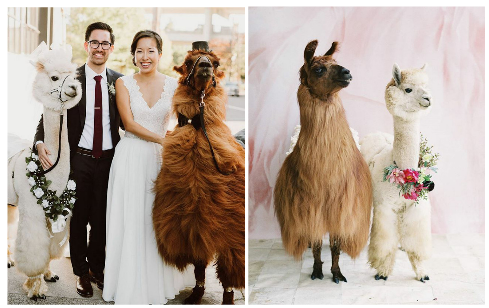
Alpaca shows have generated a lot more foot traffic these days due to giving people the opportunity and incentive to interact with the animals. We have been seeing more and more “alpaca selfie booths” where people can have their very own picture with an alpaca. Additionally, shows have included an alpaca costume contest, where typically a child will pair up with an alpaca for a duo costume role. These are the kind of experiences people are looking for -- once they can engage with the animal and appreciate it for what it is, there will likely be sparks of curiosity for the benefits, overall caretaking and use of the animal and its fiber.
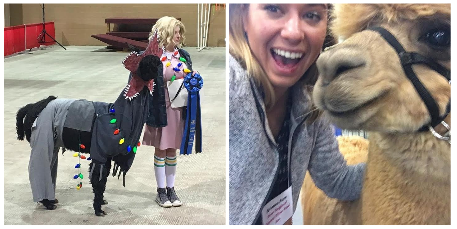
Large companies such as Bank of America have been hopping on the camelid themed bandwagon with their #LLOVEYOURAPP campaign, where they feature a talking llama to advertise their banking app. It is obvious that llamas have nothing to do with Bank of America’s business, but their overall likeability, and the general public's curiosity for them, make them a perfect fit in their advertising campaign.
If you keep your eyes peeled, you will notice a more prominent alpaca / camelid theme showing up in retail stores. Whether it be clothing, stuffed animals, or home decor, these animals are on the rise more than ever before. Although these products are not made from alpaca fiber themselves, they increase the general public’s awareness of alpacas and the camelid family as a whole. As the “brand” of alpaca increases, more people are having their interest piqued in regards to these animals, the farms in their communities, and ultimately the products made from their fiber.
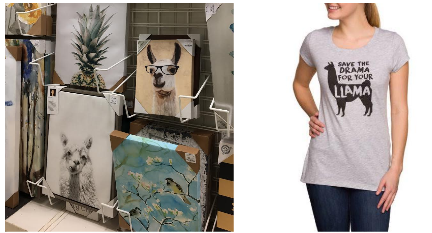
A great example of an alpaca who has gone viral on the internet is Chewy out of Adelaide, Australia. He belongs to a 14-year-old boy named Matt whose parents disagreed on getting him a dog, and instead surprised him with an alpaca. There is nothing in particular about Chewy that has made him a worldwide internet sensation other than his social media outreach. People are able to follow Chewy’s life through Instagram at @chew_paca, an account that has nearly 25,000 followers. The entire account contains cute photos of Chewy partaking in everyday activities with his human, Matt. Chewy may have a more exuberant life than most alpacas, but that is because he is treated as the literal equivalent of a pet dog in this family.
One takeaway from the Chewy phenomenon is the power of social media to reach your target demographics and bring exposure to your farm and alpacas! Thousands of people have become newly educated on alpacas solely because Chewy was all over news stations and online publications, and those stations wouldn’t have discovered Chewy if it weren’t for his internet presence, especially on Instagram. One thing that is of primary importance on Instagram is the use of hashtags. This is the number one way to reach new people and cater to their exact interests. For example, you can simply hashtag #Alpaca or you can choose something on a bit of a wider scale, such as #MadeInTheUSA or the increasingly trending #KnitPicks hashtag. Be sure to check out some other all-star alpaca accounts as well such as @alpacasofinstagram and @alpaca.gram -- take a look at their photo content and use of hashtags to see how they’ve become successful in spreading the alpaca love!
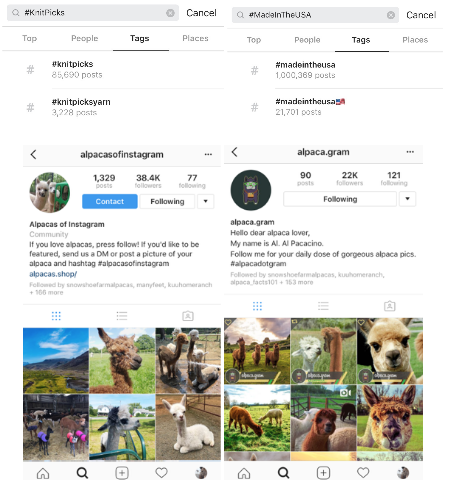
If you’re in the alpaca business, you have quite the upper hand considering how much of an internet and media sensation alpacas have become. To most, alpacas are still exotic creatures that they don’t get the opportunity to see -- people are unaware that there is most likely an alpaca farm closer to them than they think. Take advantage of the excitement these animals bring to people. Perhaps offer an “alpaca selfie booth” at your farm or next event -- give your customers incentives towards your products if they share their alpaca selfie on social media with your farm name tagged in it. That way their friends can see and share it, giving your farm more exposure to the public, expanding your potential customer base and bringing more awareness in the community to your farm. Many people, especially a younger crowd, love new experiences just as much as they love new products. Luckily for you, you can give them both with these adorable and fascinating animals!
New Product: BOLD Boucle Lined Mittens
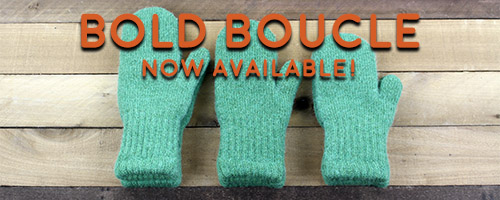
Our first production run of our BOLD Boucle Lined Alpaca Mittens are now available at fiber and wholesale price points.
We've taken one of our best selling products and added a splash of color!
Here are the colors currently available:
BOLD Boucle - Size Small: Moss Green, Purple, Egyptian Blue
BOLD Boucle - Size Medium: Moss Green, Purple, Egyptian Blue, Slate Grey
BOLD Boucle - Size Large: Moss Green, Slate Grey
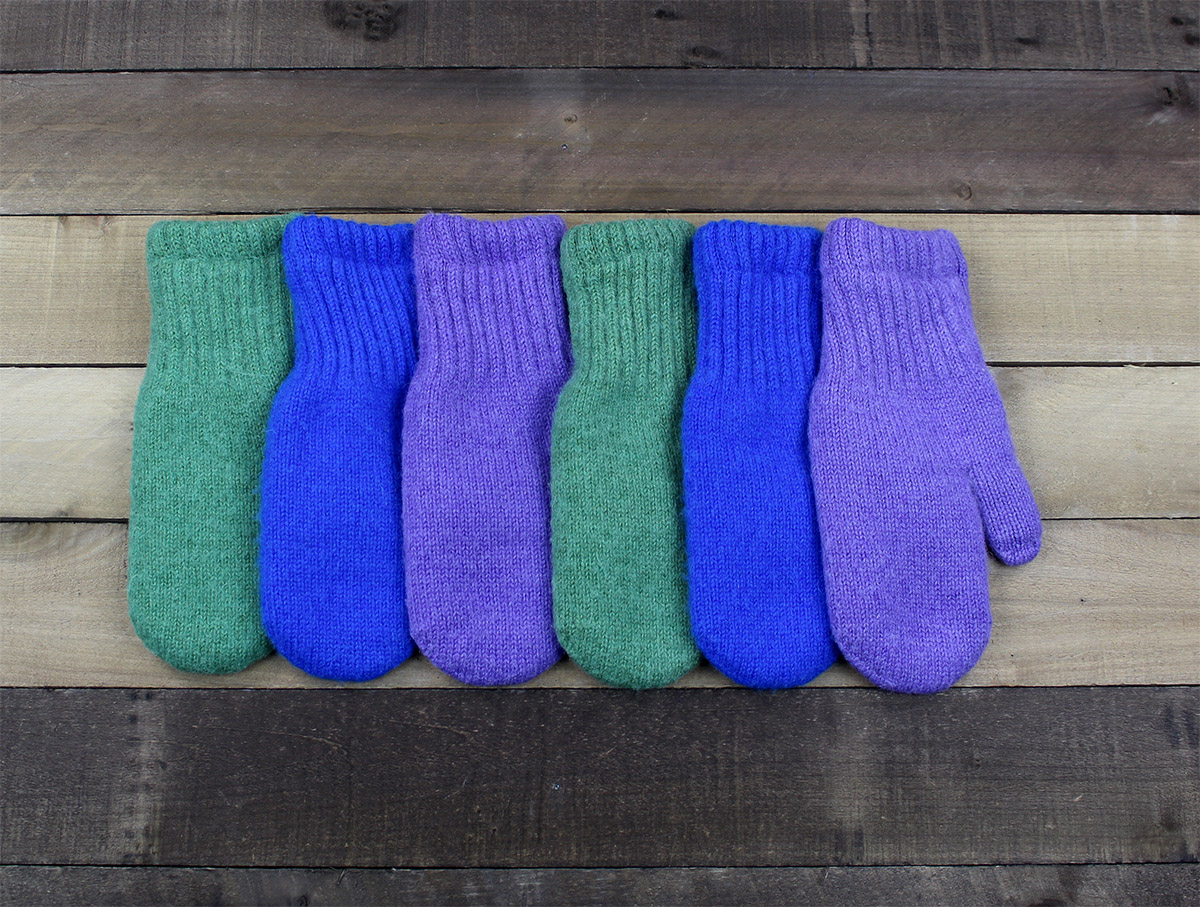
New Product: Big Cable Alpaca Blanket!
Big Cable Alpaca Blanket - New Product Release!
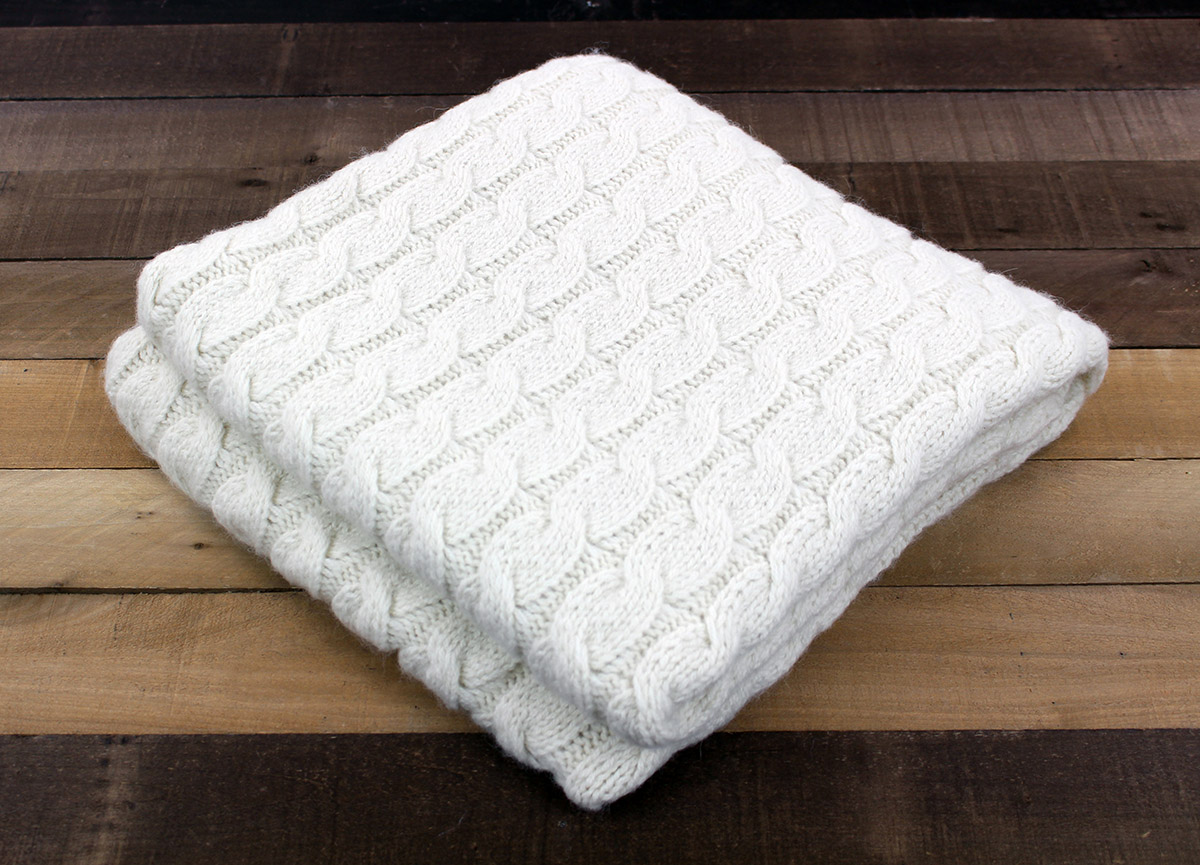
For our Big Cable Alpaca Blanket, we started with the warmest, softest, most comfortable all natural fiber grown in the country, U.S. Alpaca.
The natural breathability and moisture wicking properties of the alpaca combined with the loft of the oversized cable knit pattern make a blanket that will keep you warm and comfy year round. It’s generous size, hefty weight, and lush texture, make it perfect for layering over a bed, or draping over a love seat or sectional.
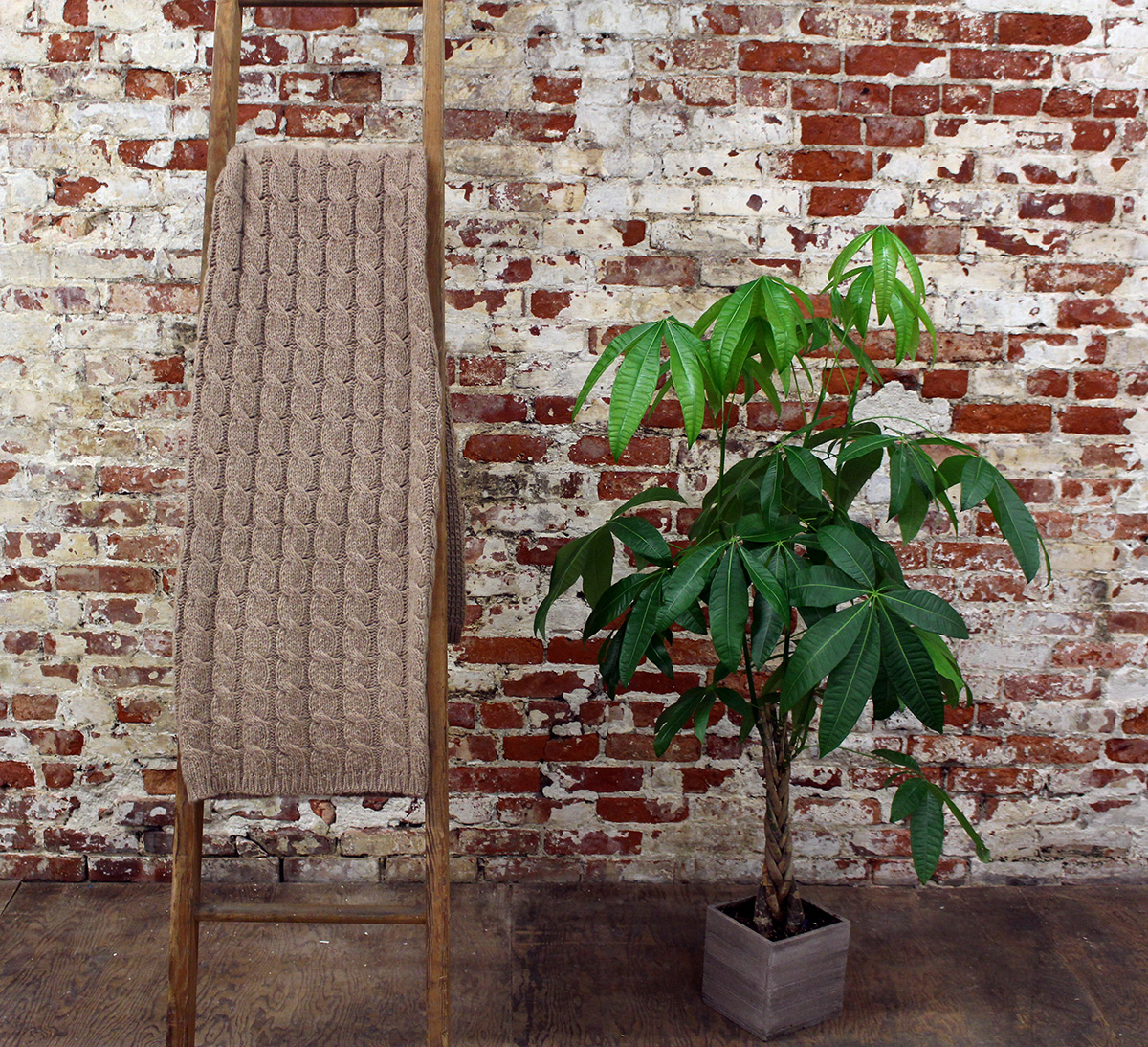
The alpaca fiber in this blanket is grown across the U.S. on alpaca farms and spun into yarn in a century old spinning mill in Massachusetts. The alpaca yarn is knit into fabric in a 3rd generation knitting mill in New Jersey. Once knit, the blankets head back to us here in the Spindle City, Fall River, MA, where we cut, sew, and finish these beautiful blankets.
The evident quality and finesse of this heirloom blanket truly adds more “home” to your house. A perfect gift for someone who has it all and appreciates the best.
Available now at both Fiber and Wholesale price points!
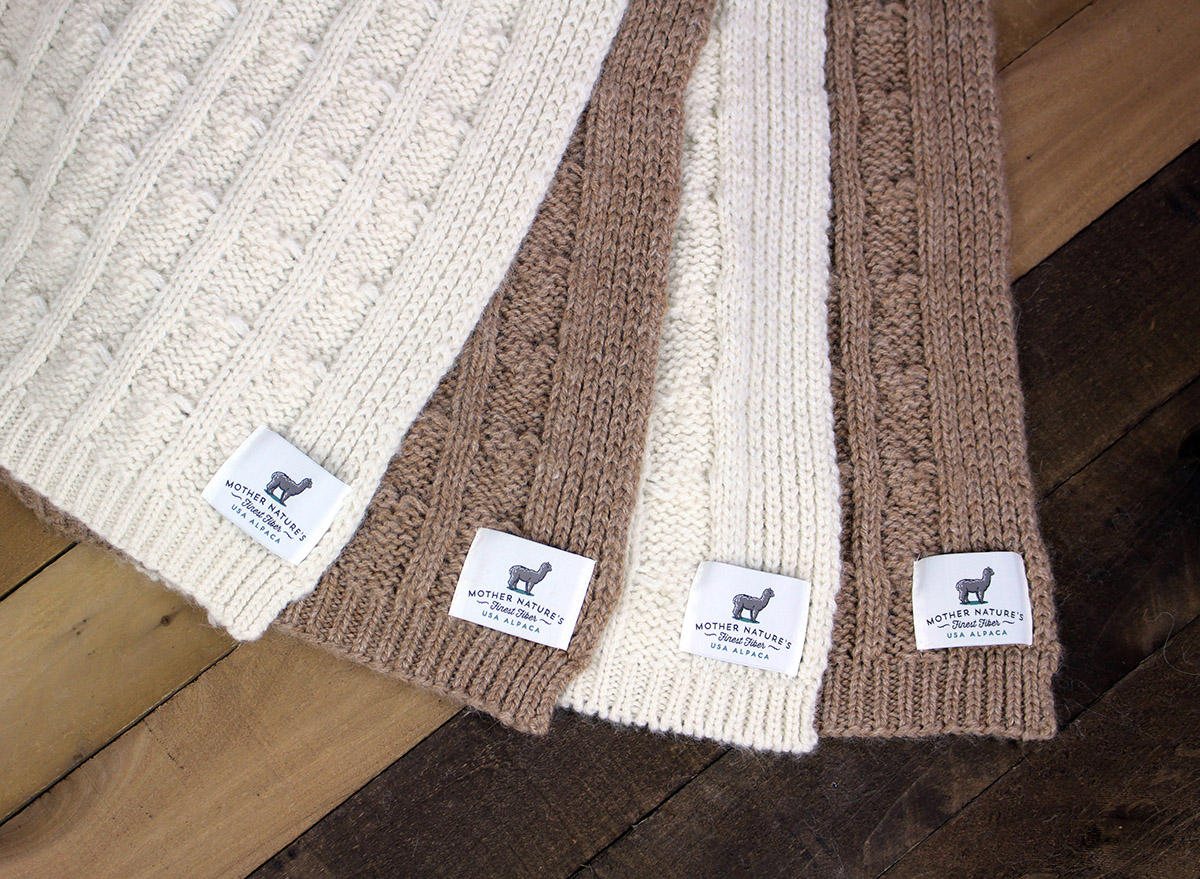
Article: Utilizing Co-Marketing to Grow your Business

Utilizing Co-Marketing to Grow Your Business
by Brianna Paon
One of the great advantages of bringing your alpaca products to local events and farmers markets is you're surrounded by like minded vendors, catering their businesses to the needs of the community. Connecting with like-minded businesses and finding ways to work together can be mutually beneficial. The key is finding a business that you are not in direct competition with, but share the same demographics. For example, if you are selling U.S. made alpaca products, you will likely have success cross-promoting with a business that shares your target demographics, such as a local craft brewery, a handmade soap maker, or a dog treat bakery!
There are plenty of innovative ways to promote another business while trying to sell at yours. For the purpose of this blog, let’s say you do decide to co-market or co-campaign with a local craft brewery. Each of your demographics involves people that most likely appreciate quality goods, craftsmanship, and locally produced goods. By cross-promoting with a local craft brewery, you are both targeting the same type of audience, but your service offerings are totally different. So how is it that you begin this cross-promotion process?
Reach out to a local business that you find reaches a similar customer base and propose some ideas that will be helpful for each of you. There are several ways you can go about this that really don’t require much work. You could each display each other’s promotional flyers or business cards at your businesses so that more people can see them. The idea that one business is vouching for another business certainly can attract and strike interest in potential customers. Another option could be to exchange coupons with another local business. For example, if a customer buys two or more items from your store, they could perhaps get a coupon for a free or discounted draft beer from the local brewery. If a customer buys a pitcher of beer at the local brewery, they could get a 10% off coupon on their next order at your farm store.
Another good method could be to create a new pop up market or event altogether. You could invite the handmade soapmaker to vend with you at your next holiday event or open house during a weekend at your farm. By the two businesses working and promoting something together, each of you are sharing your respective audiences to boost your clientele. Recurring customers for the organic produce become new customers of yours, and vice versa. Again, each of you are targeting the same demographic, but are selling totally different goods. People have an appreciation for established connections between small businesses, and doing an event together, whether big or small, could prove to be successful for both your farm store and whoever it is you choose to work with.
NEAFP is hiring 2x Production Assistants!

NEAFP is growing and looking to increase our team in order to meet the challenges of the U.S. Alpaca fiber industry. We are adding 2 full time Production Assistants to help with the increase of raw fiber coming in to the mill and the growing amount of finished products heading out the door!
Here is the full job listing (with a link to apply at the bottom)!
The New England Alpaca Fiber Pool (NEAFP) is an agricultural service
provider to U.S. Alpaca farms looking to process their alpaca fiber in
the U.S. on a commercial scale. We manage the pooling of raw alpaca
fiber coming off thousands of farms and oversee the manufacturing
process from raw fiber off the animal to finished good ready for shelf.
NEAFP was started in 1997 and located in Fall River, MA.
We are looking to hire a full time (40 hours per week) production
assistant to help in several different operations around the mill.
This position's responsibilities will include (but are not limited to) :
- Sorting Alpaca Fiber by Color and Grade
- Baling and Handling Fiber
- Preparing Product for shelf: Labeling, Tagging, and Packaging of finished goods
- Assisting in Washing and Finishing of Products
- Cleaning and organizing work and warehouse space
What we are looking for in this position:
- Strong Work Ethic
- Reliable, Punctual, Dependable
- Positive, Can Do Attitude
- Works well as both a team member and alone
- Attention to Detail while working at a quick pace
- Not afraid to get dirty on the job
- Flexibility, willingness to fill in roles and help where needed
- Ability to work on feet and lift up to 50 lbs
- Bonus Points (but certainly not required!): Interest in livestock, agriculture, natural fibers, or textiles
Schedule: 40 hours per week. Monday through Friday - 8am to 4:30pm
Compensation / Benefits: $11 per hour to start. Benefit Packages available after introductory employment period.
Application:
Please share with us your resume, as well as:
Why would you be a good fit here at The New England Alpaca Fiber Pool (NEAFP)?
You can apply here :
http://www.neafp.com/index.php?dispatch=pages.view&page_id=201
April NEAFP Note: Colorado Bound, Sharing Your Booths, & Commom Fiber Contaminates
In case you missed it,
read the April NEAFP Note here:
http://mailchi.mp/neafp/april2017
Never Miss a NEAFP Note - sign up for our monthly email newsletter here: http://eepurl.com/f7DfD
Alpaca Farmers share their Booths and Setup Tips and Tricks
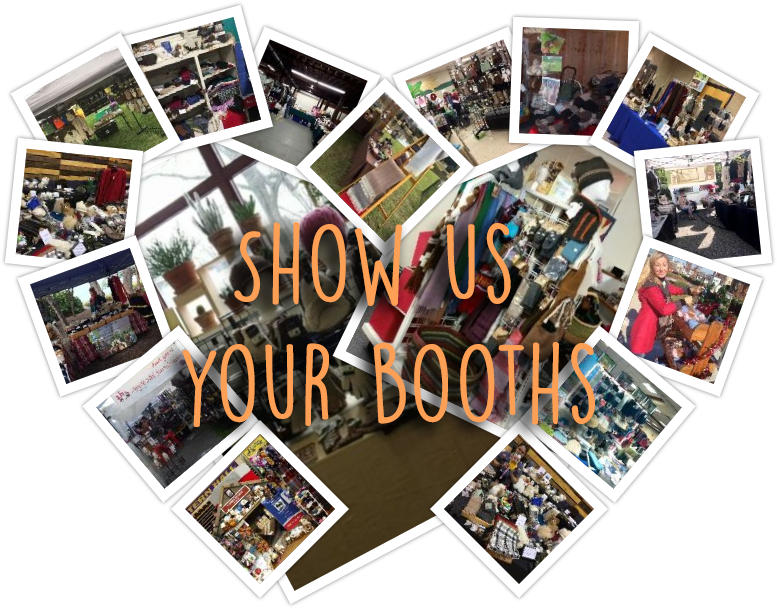
A couple months ago we asked farms to share photos of their market booth setups along with some tips and tricks. We've compiled the submissions to share with everyone, we hope you learn something new to implement in your next pop up market. Thank you too all those who participated!
Submission #1
Name
Tamara & Brian Osterman
Farm
Suri Serenade Alpacas
Website
http://www.suriserenadealpacas.com/
https://www.facebook.com/SuriSerenadeAlpaca/
Share a tip/trick to displaying product!
We display our NEAFP socks in the Mayflower Baskets. We put foam cutouts in the bottom to raise the socks (Low-Pro, Survival and Boot) up to the desired height. The baskets are eye-catching and draw attention from a distance. It's a handy way to market both products and since the Survival socks are a best seller, they are prominently displayed!Submission #2
Name
Sarah Conyer
Farm
Alpaca Dreams, LLC
Website
http://www.alpacadreamsnc.com/
Share a tip/trick to displaying product!
If you use necktie display racks and tiered displays like we do for our alpaca products, arrange them so you can see your customers from behind the tables. We had too many things for the space we were given and we had to keep ducking around our displays to talk with our customers. Next time we will alternate the tall displays with shorter ones.Submission #3
Name
Tacha Gennarino
Farm
Genna-rations Farm
Website
http://genna-rationsfarm.com/site/
Share a tip/trick to displaying product!
In a 6'x8' booth, we go vertical. We purchased this display online...it is very versatile.When we are at a show with less foot traffic, we scale down our display based on the audience. Here, we have eliminated most of the higher end scarves, but have all of the staples available. Everything fits on a table and is easy to see. My biggest tip when using a table is to get your product at eye level by using bed risers under the table legs...makes a big difference!
At an outdoor event, we use a 10'x10' canopy (make sure it is weighted down WELL or you'll end up having to have someone hold it down. My tip here is to move things to the front of the tent and use up ALL the room from left to right. People don't seem to like to come all the way into the tent and you want to look like you have a lot to offer.
Submission #4
Name
Shirley Lanouette
Farm
Hill Crest Alpacas
Website
http://www.hillcrest-alpacas.com/
Share a tip/trick to displaying product!
We do Simpson Spring Marketplace in So. Easton every Saturday 10 am to 2 pm from October to May 1st. This is an indoor Market and has become an Outlet for customers to shop on Saturday. It is very important to be there every week so your customers can always find you. From June 1st to October we do Westport Farmers' Market an outdoor market and therefore bring alpacas as a draw for the Market and to educate visitors about alpaca and their fleece properties segmenting into product sales.
Submission #5
Name
Brianne Harris
Farm
Apple Hill Farm
Website
https://www.applehillfarmnc.com/
https://www.facebook.com/applehillfarm/
Share a tip/trick to displaying product!
We have a single Low Pro and a single Survival sock that has been washed hanging with our socks. This allows people to put the hands down in the sock and really see what they feel like!
We hang all of ours on Gridwall.
Submission #6
Name
Shelly Walsh
Farm
Good Karma Ranch Alpacas
Website
http://www.goodkarmaranch.com/
https://www.facebook.com/GoodKarmaRanchAlpacas/
Share a tip/trick to displaying product!
ALWAYS have animals with you and using an old ladder for bed blankets and throws looks nice and keeps them clean.
Submission #7
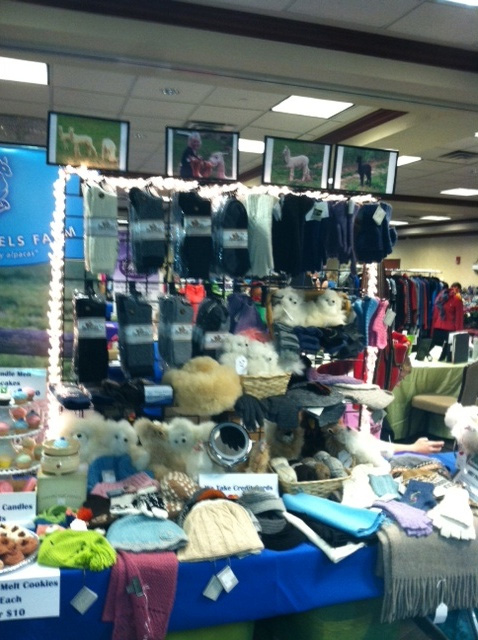
Name
Barbara Thompson
Farm
Alpaca Angels
Website
N/A
Share a tip/trick to displaying product!
My daughter learned to spin yarn and we set up a spinning wheel in the booth. It really drew prospective customers.
Submission #8
Name
Jim Konyn
Farm
Hums of Faith Suris
Website
https://www.facebook.com/alpacas06/
Share a tip/trick to displaying product!
Inside a storage shed that we rent and sell our products at a local Christmas Tree Farm.
Submission #9
Name
Denise Carone
Farm
Green Acres Alpaca
https://www.facebook.com/Green-Acres-Alpaca-Farm-2...
Share a tip/trick to displaying product!
Always have a Banner and make sure everything is priced.
I sell more socks on the Gulf of Mexico on Anna Maria Island than at Pa Farmers Markets. Emphasizing the Moisture Wicking and Antimicrobial properties!Submission #10
Name
Catherine Brown
Farm
Beech Springs Alpacas
Website
http://www.beechspringsalpaca.com/
Share a tip/trick to displaying product!
Change things around every few weeks (if it is part of a permanent setup), and otherwise keep it interesting and colorful.Submission #11
Name
Stephanie Syberg
Farm
Alpacas Midwest
Website
https://www.norlandersocks.com/
Share a tip/trick to displaying product!
Norlander Sock Company sells at various markets and we go out of our way to make our displays seasonally relevant. This photo was from a pop up Winter Market and we decorated with holiday items. We also customized our signs to reflect the current holiday and made sure signage included that day's event.Submission #12
Name
Kathy Albert
Farm
Heartland "Criations" Alpacas LLC
Website
https://www.facebook.com/heartlandcriations.alpaca...
Share a tip/trick to displaying product!
My tip is to brand yourself with your display, so people will recognize you wherever you go!
Submission #13
Name
Ellen Dour
Farm
Memory Maker Alpacas
Website
http://memorymakeralpacas.com/
https://www.facebook.com/Memory-Maker-Alpacas-2671...
Share a tip/trick to displaying product!
Sending two pictures from same booth, to show entire display, from a show this past November. This was the first time at this show. A ten foot table was provided, with bleachers behind the table. A strange set-up with the bleachers there but we made the best of it and did very well.
Suggestions: have items priced so customers don't have to ask prices; have several sock size cards, that you all provide, laid out for referral; more popular items towards front of table; I have quite a few photos of our alpacas laid out, and offer them to customers who are purchasing items for gifts, so they can be included with gift; lots of business cards available; also have an alpaca information sheet that talks about their care, their fiber, etc. available if wanted; I have guest log book in my farm store that guests sign and leave email address.....when I have a list of all the bazaars we are going to attend in the fall/winter I email these to everyone on the list (this was a customer suggestion); take credit cards ( we now use PayPal; probably 50 per cent of this past winter's sales were credit); I have a lot of repeat customers each year and they seem to sincerely appreciate that I remember them and often remember what they like to buy each year; I do carry some stuffed animals and always have some of these towards front of tables. It's surprising how many people, of all ages, stop and hold/pet these animals and most often end up buying one or more; have a small mirror readily available for those wanting to try on a hat; for exceptionally nice people, who inquire about farm visits, I always let them know they are welcome to come for a visit (we don't charge a fee as I hear some farms do), call first, and then make their visit enjoyable and fun. Many return year after year and always like to buy more items in the farm store.
NEAFP running Fiber Collection @ Great Western Alpaca Show - Denver, CO

We are happy to announce that we will be vending and running a Fiber Collection at the upcoming Great Western Alpaca Show in Denver, CO!
This is a great opportunity for farms in the area to get their fiber to NEAFP for free as well as check out our products and start stocking your farm stores for the Fall and Winter Sales season.
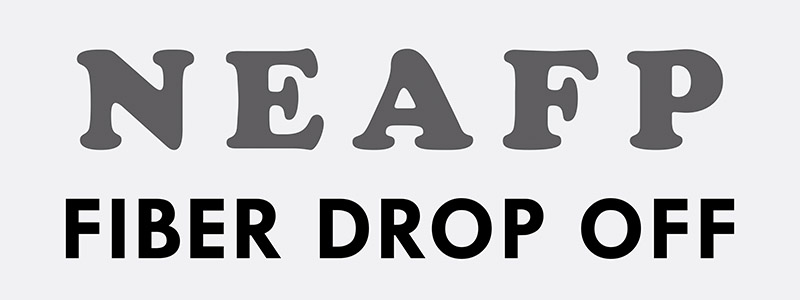
This collection's fiber will be palletized and NEAFP will cover the freight trucking charges back to our mill in Fall River, MA .
Everything you NEED to KNOW to Participate in this FIBER COLLECTION:
- We are accepting Blanket and Secondary Fiber Only - (**No Thirds**)
- We are accepting both Huacaya and Suri Fiber
- ALL Fiber must be BOXED for this collection.
- Each box must be packed tightly with fiber, no excess air!
- Each Box must contain the proper paperwork with your account/farm Identification (FiberBank Deposit Slip or FiberPurchase Slip)
- Look for the NEAFP Fiber Drop Off Location @ the Show
- Drop your boxed fiber (with ID in each box) off
That’s it. From their your fiber will make it’s way back to NEAFP for Free!
Need a FiberBank account? Head here!
**We will not be collecting Third-grade fiber at this show's collection due to the increased cost of shipping it across the country.
Action Alert: Massachusetts proposed bill S.490 to negatively impact Alpaca Industry
Action Alert: Massachusetts Bill S.490
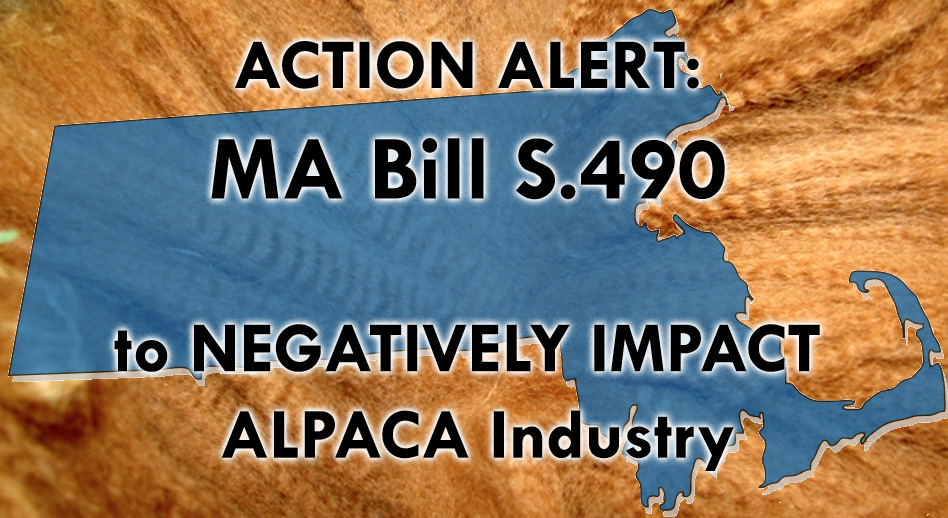
Earlier
this year
Bill S490 was introduced in the MA State House of
Representatives that would ban all wild and exotic animal shows and
displays in the state. Due to the bill being poorly
written and vague, both
LLAMAS and ALPACAS would be considered an
exotic animal in this proposed legislature.
If passed as is, this bill could possibly have the unintended consequences of:
- Negatively impacting the natural fiber industry across the Commonwealth
- Outlawing Alpaca Shows across the Commonwealth
- Restricting the sale and transportation of Alpacas in the Commonwealth
- Reducing small farm revenue at farmers markets and festivals
- Negatively impacting small farm revenue across the Commonwealth
- 'Reducing Manufacturing Jobs associated with natural fiber processing
Currently the bill has been referred to the Joint Committee on Environment, Natural Resources and Agriculture for review and there will be a hearing on it (date not yet set).
NEAFP is actively in contact with state legislators and encourage all alpaca farms in MA and all of New England to speak out in OPPOSITION of Bill S.490.
Here are the MA State Representatives on the Joint Committee on Environment, Natural Resources and Agriculture
Email Contacts:
anne.gobi@masenate.gov
Mike.Rush@masenate.gov
James.Timilty@masenate.gov
James.Eldridge@masenate.gov
Thomas.McGee@masenate.gov
Ryan.Fattman@masenate.gov
Gailanne.Cariddi@mahouse.gov
RoseLee.Vincent@mahouse.gov
Thomas.Petrolati@mahouse.gov
Robert.Koczera@mahouse.gov
Mary.Keefe@mahouse.gov
john.velis@mahouse.gov
Christine.Barber@mahouse.gov
Dylan.Fernandes@mahouse.gov
Jack.Lewis@mahouse.gov
Donald.Berthiaume@mahouse.gov
james.kelcourse@mahouse.gov
Here is a copy of the email NEAFP sent out:
Hello Paul,
Thank you for taking the time to tour the New England Alpaca Fiber Pool facility last Friday. Knowing your commitment to agriculture, the environment and the economy, it was a pleasure to give you a tour of our unique business in Fall River.
Since your visit it has been brought to my attention that there is a bill before the Massachusetts House & Senate (S 490 or SENATE DOCKET, NO. 2002) that among other things, attempts to redefine Llama ( and alpaca) from a domestic farm animal to an exotic animal. As a principle in both Golden Touch Farm (Westport), home to one of the largest alpaca herds in Massachusetts and the New England Alpaca Fiber Pool (Fall River), the largest processor of domestic alpaca fiber in the country, this bill is of great concern. I believe it's passage will have the unintended consequences of:
- Negatively impacting small farm revenue across the commonwealth
- Negatively impacting the natural fiber industry across the commonwealth
- Reducing Manufacturing Jobs associated with natural fiber processing
- Reducing small farm revenue at farmers markets and festivals
In an age where slow food and slow fashion have come en-vogue, the commonwealth has successfully leveraged its cultural diversity and historical background to benefit greatly from both the culinary and fashion impact of these trends. LLama and Alpaca plays a key role in the slow fashion trend in that they have been a domestic farm animal for over 5000 years and as a result are easy to care for, resilient to disease, require low food and water and are small and stress free animals. These attributes are well suited to small agricultural initiatives that seek an alternative livestock model while allowing small farms to participate in natural fiber / slow fashion that is both profitable while having low impact on the environment. Re-categorizing a Llama or Alpaca as an exotic animal is a poorly conceived notion. South America has domesticated these animals for over 5000 years and are very much equivalent to our own sheep and mule. They normally don't exist in the wild.
Slow Fashion is the next big thing for agriculture where natural fibers will play a pivotal role. The small footprint of our state does not immediately lend itself to large farms, however, it is well suited to small diverse farms where locally grown and locally made products are a priority. Massachusetts and especially the Southcoast does have a long historical background of processing natural fiber ( wool & cotton) and a strong ready made infrastructure waiting to be revitalized. Our century old textile mills are the perfect place to promote a new fashion movement and we should do what ever is in our power to promote that activity. Certainly, re-categorizing a well established fiber producing animal as exotic does not help facilitate that goal.
Manufacturers are interesting in alpaca fiber not because it is exotic but due to the unique advantages it has over wool (soft, moisture wicking, warm). With the increased market demand for merino wool, alpaca provides a unique alternative. Wool is disadvantaged with its tendency to shrink and requires delicate handling. The wool industry solution to this problem is to "Super Wash" the wool using very harsh chemicals with significant impact on the environment. Alpaca does not have the same shrinking problem and does not need to be "Super Washed" and as a result, can be blended with wool and alleviate the negative impact on the environment. Identifying LLama and Alpaca as exotic may cause investors to rethink revitalizing some of our old mills and processing natural fiber in the commonwealth. No such restriction has been adopted by any state that I know of.
In closing, I would ask for your help in doing whatever you can to defeat this bill as it may have unintended consequences both on agriculture and the economy.
Thank you,
Chris Riley
President
New England Alpaca Fiber Pool
http://www.neafp.com/
![]()
------March 29th, 2017 - Response from Bruce Tarr - Original Sponsor of the Bill-------
Dear Mr. Riley:
I wanted to take this opportunity to thank you for your input relative to Senate Bill 490, An Act Relative to Wild and Exotic Animal Performance Prohibition, a bill I filed this past January that is currently pending before the Joint Committee on Environment, Natural Resources and Agriculture (ENRA).
My intent in filing this legislation centered on those traveling performing acts usually referred to as circuses, as a means to address the often cruel and abusive living circumstances of these creatures. Unfortunately, it has become clear to me that the current language also has the potential to impact local educational enterprises and farms, which certainly do not merit inclusion in a statute of this sort. The points you and other Commonwealth residents, many of whom own small businesses, raised as unintended consequences of Senate Bill 490 as currently drafted certainly point to the fact that the bill warrants a much more thorough analysis and additional vetting by stakeholders and the general public.
Please know I have notified the chairs of ENRA as well as the cosponsors of Senate Bill 490 with my request that the bill be reviewed and researched further, including but not limited to the correlation with any applicable federal law or regulation, with the hopes that the committee may advise on more appropriate language in the context described above. I would encourage you to forward to the committee’s attention your personal statement on Senate Bill 490 so that your comments may be considered by the research staff and be included in the material that would be made available to other legislators. I would be happy as well to send along to the committee chairs any statement that you may have emailed to me recently, should this be more convenient for you. I welcome your advice on this; you may feel free to email me directly at Bruce.Tarr@MASenate.gov.
Again, thank you for reaching out to me.
Sincerely,
Bruce Tarr
State House, Room 308
Boston, MA 02133
https://malegislature.gov/Comm
New Spring Show Added: Great Western Alpaca Show in Denver, CO
NEAFP is heading back to Colorado in May!

We had such a great time at the AOA National Alpaca Show last weekend that we have decided to head back to Colorado in May for the Great Western Alpaca Show!
May 5 – 7, 2017
National Western Stock Show Complex
4655 Humboldt St. Denver, CO 80216
Blizzard forecasted, shipping delays expected
Blizzard in the Forecast for NEAFP this week
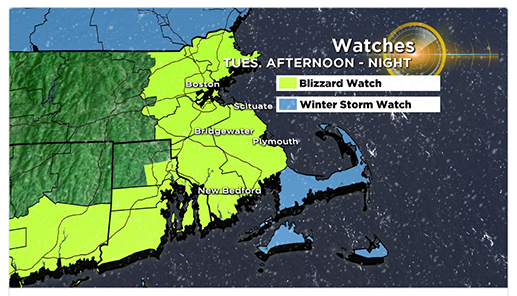
Although we've been prancing around the mill in full on Spring mode - Winter has other plans for us. It looks like we will be receiving a serious snow storm (possibly blizzard conditions) starting tonight and stretching until Tuesday Night / Wednesday morning.
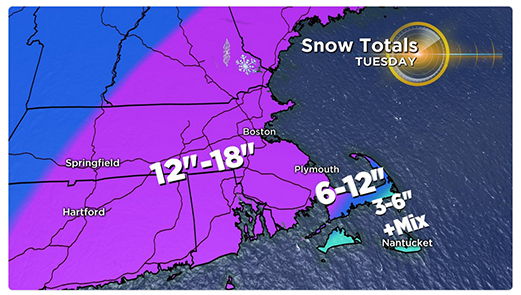
With the amount of snow projected and high winds we expect to be closed on Tuesday and possibly part or all of Wednesday. All orders that are placed before 11am today (Monday 3/13) will ship out in today's mail. Orders placed during the snow storm will be shipped out by the end of the week - most likely starting on Thursday.
For packages shipped end of last week and today, there may take an extra day to arrive as this storm will be stretching from D.C. to Maine.
We also will be flying out to Denver, CO on Thursday for the AOA National Show - we expect our travel plans to stay the same but will keep you posted if they do indeed change.
To everyone in the storms path, we hope you and your alpacas have a safe, warm, and uneventful snow storm. Thank you for your patience!
Carolina Alpaca Celebration, My First Alpaca Show!
Carolina Alpaca Celebration - My First Alpaca Show!
by Brianna Paon
After six momentous months of working for the New England Alpaca Fiber Pool, and after the bustling surge of the fall and winter seasons, I was given the opportunity to attend my first alpaca show - the Carolina Alpaca Celebration in Concord, North Carolina. I went along for the 13 hour trek halfway down the east coast with Mike Gula, the primary fiber sorter here at NEAFP. We had some beautiful sunshine for the entirety of the weekend which was a nice escape from our brisk and wavering weather patterns here on the Southcoast, Massachusetts. Upon arrival at the Cabarrus Arena Friday morning, we steadily began building our booth among the alpaca that were trickling in from their time on the road. Even though the show didn’t technically begin until the following day, people were already coming to the booth to drop off their fiber while chatting it up with us amicably. We had encountered plenty of folks who were happy to see us and provided us with an overwhelming amount of positive feedback and praise. This had immediately struck me - it was so interesting to hear this type of feedback in person from the other side, so to speak, rather than from behind an email signature on a laptop. It was at this point, before the show began, that I had known how much I would thoroughly enjoy the following two days ahead.
We finished hanging up all of our products, labels and decor at around 5pm, leaving plenty of time for us to grab some dinner and do some exploring in the area. Not only have I not been to an alpaca show before, but it was also my first time visiting North Carolina - I wanted to make the most of my experience there. We stopped at Chef Thai & Sushi Bar and indulged in some excellent spicy rolls - our waitress nearly had us in tears from how hilariously entertaining she was. Afterward we stumbled upon the historic Gibson Mill, which housed not one but two breweries - High Branch Brewing Company and Cabarrus Brewing Company. The beers and the atmosphere at each of the two breweries were exceptional - so much so that we visited both two nights in a row!
High Branch Brewing Co. | Chef Thai and Sushi | Cabarrus Brewing Co.
On Saturday morning, the Carolina Alpaca Celebration had officially commenced. I was eager to begin meeting people in person that I had only heard about, or had only spoken on the phone briefly with in the past. Before the day got into full swing, I took some time to walk around, get a closer look at the animals as well as all the vendors. I was still very new to this - my only real exposure to a lot of alpaca at once has been during my handful of visits to Golden Touch Farm in Westport MA, the farm in which my bosses, Chris and Shelley Riley own and operate. I tried hard to contain my excitement around all of the regular alpaca folks but really I was struggling to keep my cool as I internally gushed at every adorable alpaca I laid my eyes on. These animals look back at you in such a way that it’s almost as if they are staring right into your heart and soul.
I feasted my eyes on an array of beautifully handcrafted products, lavish sweaters and shawls and just about every stuffed animal under the sun made from soft, plush alpaca fiber. I was first drawn to an assortment of accessories made by Courtney Tomchik out of Clemmons, North Carolina - her products are mostly accessories varying from buttons to pendants, all handmade from clay. Each individual product has its own original design etched into it. Courtney told me about the type of glaze she uses for her products, and how they afterward need to be fired in a kiln reaching as high as 2,000 degrees to be finished. I was happy to take home a gorgeous pair of abstractly designed earrings and an alpaca-shaped magnet for my fridge. Courtney was only the first vendor I had stopped to speak with and I already wanted to start giving all my money away - I was in trouble!
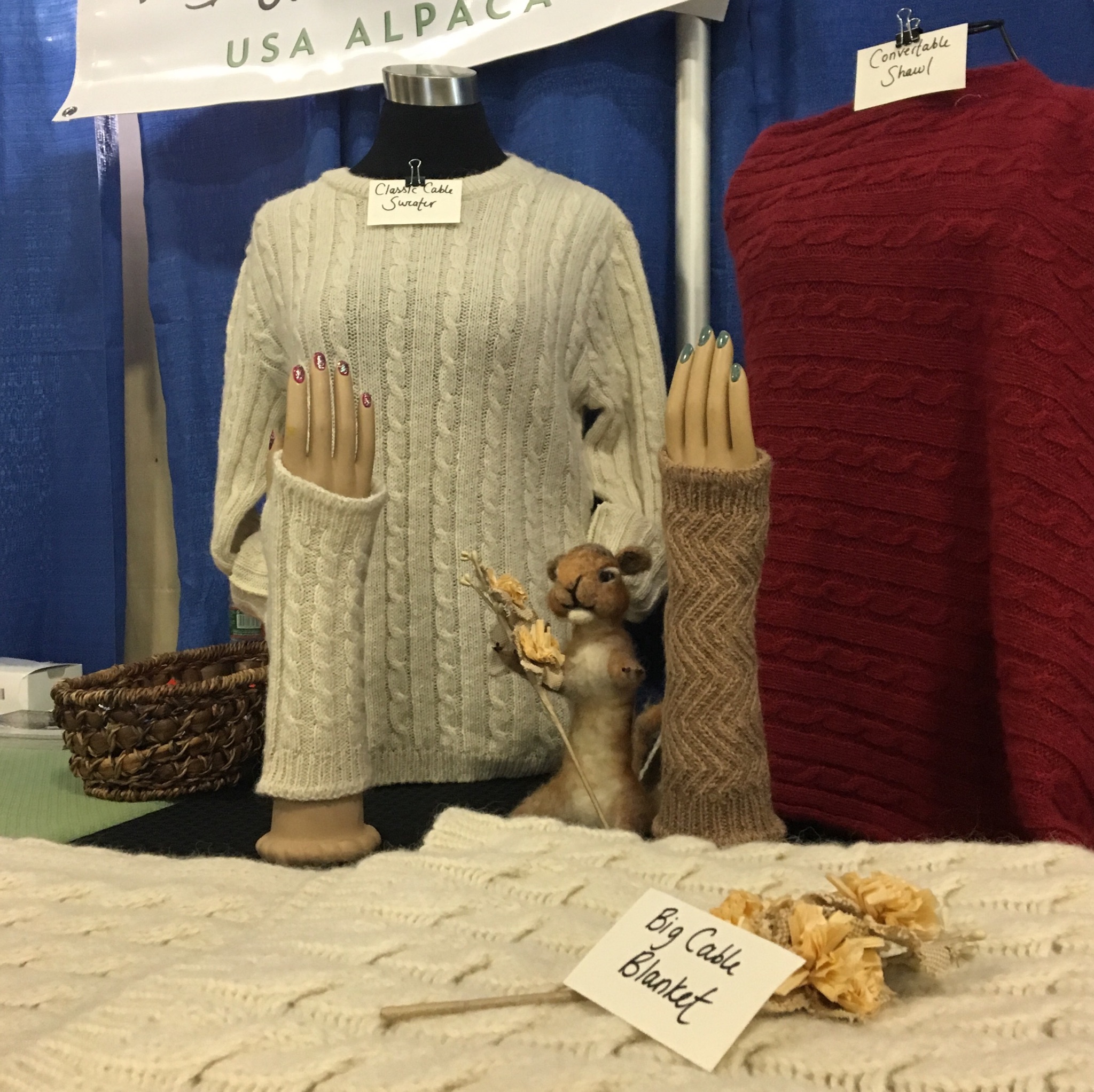
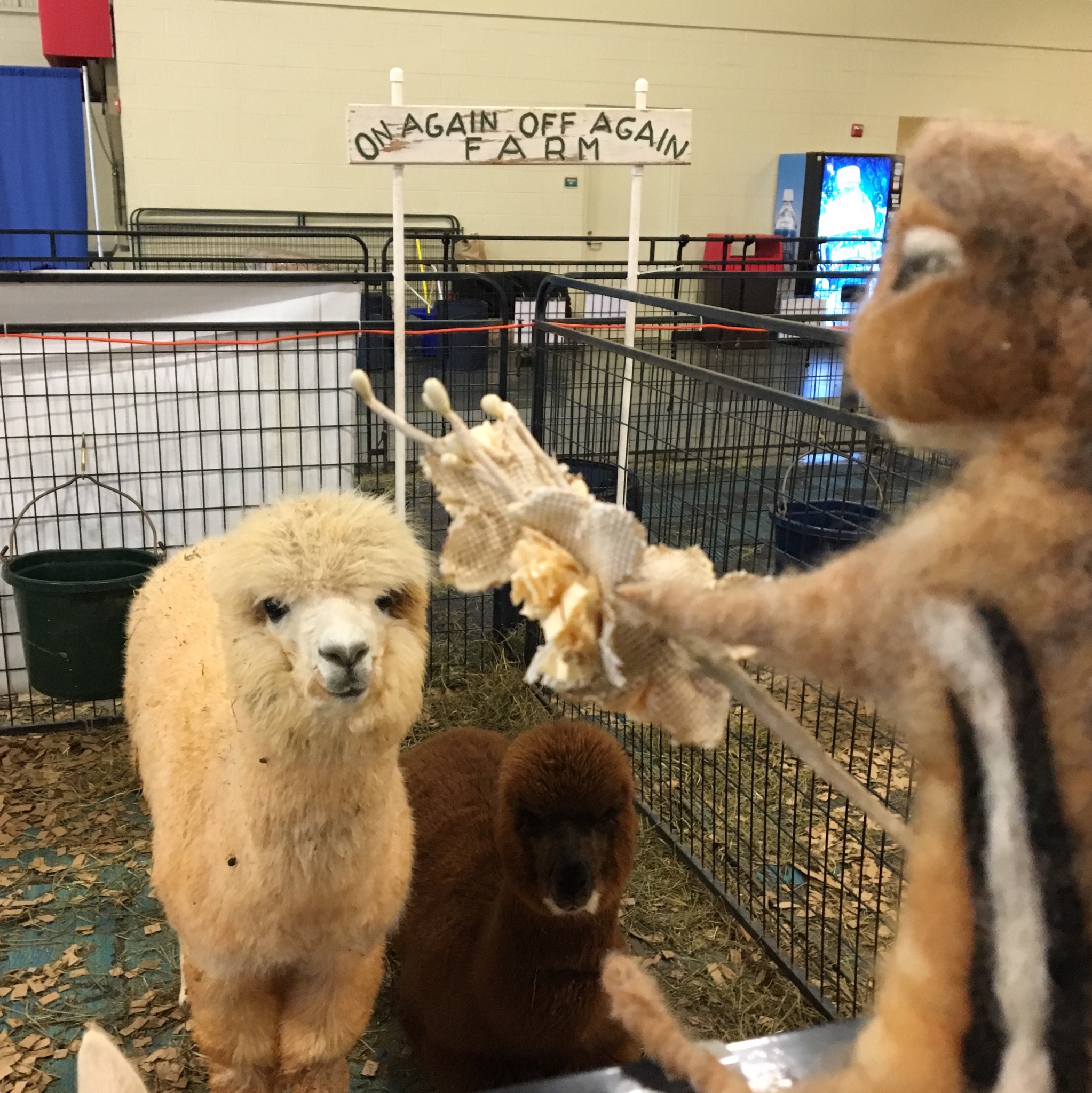
As the day went on, more and more people continued to drop bags of fiber off at our booth, browse through products that they may have already been familiar with, as well as take a gander at some of our newly featured products that are yet to be released: Classic Cable Alpaca Sweater, Convertible Shawl, and Glittens. It was an enriching experience getting to talk to everyone who either works with or is interested in working with our fiber pool, and to feel that my words were making an impact. It was wonderful to see the joy on people’s faces after having purchased a beanie or new pair of socks for themselves or a loved one. While I had intended to take part in some of the education classes that day, I was too busy soaking in all of the face-to-face interaction, and before I knew it day one was over! That night, Mike and I made some plans with Brianne Harris from Apple Hill Farm to get some dinner, shoot the breeze and have some laughs. It was wonderful to receive insight from her and hear about how she operates the farm. We stopped at Crispy’s Bar and Grill for dinner, which had bacon in just about every single dish on the menu - I certainly wasn’t complaining about that.
Sunday quickly rolled around, day two of the Carolina Alpaca Celebration, and I finally was given the time to further expand my knowledge on the wonderful world of alpaca - especially the areas in which I am not well-versed in (which were most areas). With this being said, I’d like to give a huge thank you to Patty Fuller from Poplar Hill Alpacas for taking the time out of her day to show me around and thoroughly explain the objectives of these shows. She showed me the Walking Fleece judging area which had contained up to 70 individual fleeces. Patty also shed light on what the spin off competition is all about, and elaborated on the differences between fiber samples. Lastly, she brought me over to the halter judging, which was my personal favorite part of the show. I was walking around acting as a “sponge”, as she called me, absorbing as much information as I possibly could with my time remaining.
I imagine that for alpaca farmers, especially for the ones that have been in this industry for quite some time now, it may be easy to forget how this lifestyle is perceived coming from fresh eyes. I can truly say that my first alpaca show went as smoothly and perfectly as it possibly could have - not only did it change my entire perspective of my position, but it also made me even more appreciative and proud to work for a company like NEAFP. I’ve gained so much respect for an industry that I was entirely unfamiliar with less than a year ago. As I had mentioned to Sean, Shelley and Chris upon returning home, “send me anywhere you want!” and boy did I mean it. I genuinely and wholeheartedly look forward to my next alpaca show experience, and many more in the future to come. If you’re in the area for our next alpaca show in Springfield MA, the North American Alpaca Expo, make sure to stop by and say hello - I’ll be the one staring off at a nearby cria with big, googly eyes. See you then!
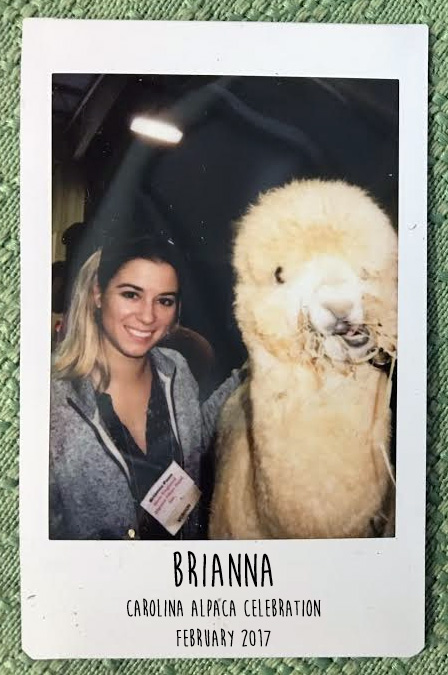
NEAFP Note: Shows, Booths, & Spring Cleaning
Show us your booths!

Hundreds of alpaca farms across the country are setting up booths at pop up markets each week and we want to share setup experience with all farmers who are out there beating the streets!
We are looking for alpaca farms to share pictures of their craft and market booths! We will be compiling a gallery to share with everyone in order to get people thinking of their own setups and how they can improve them for future events.
Along with pictures of your setup, we are also looking for any tips and tricks you’d be willing to pass on to fellow farmers.
As a little thank you for participating, and your willingness to share with the group, we will be giving away a Suri Lap Blanket to one lucky submitter! Each submission that has both a booth setup picture and a tip or trick will be entered in the give away.
NEAFP will be accepting submissions for the next few weeks - once we have enough we will be posting the gallery to our blog and social media pages for all alpaca farms to see and share.
The winner of the Suri Lap Blanket will be chosen at random and announced when we publish the gallery and article!
We very appreciate you showing us your booths and by sharing them with the alpaca farming community, everyone will take a little something back to make their own events that much more successful!
Submission Form
Spring Fever came early: New Closeouts listed!

As the title says we have started our Spring cleaning here at the mill a bit early this year and have begun listing some new closeouts, check them out!
NEAFP closed today due to snow

NEAFP is closed today due to extreme blizzard like conditions. We expect to be back open this Friday, 2/10. All orders will start shipping out then, Thank you and hope you all affected by the snow storm stay safe and warm!
Upcoming Alpaca Shows & Fiber Collection Sort Status

Upcoming Alpaca Shows
We have started to map out our vending / fiber collection for the upcoming Spring alpaca show season. Coming by and seeing us at an alpaca show is a great way to get your eyes and hands on our products as well as drop your fiber off to us and get back to NEAFP for free!
Here is a list of our upcoming shows:
*AOA National Alpaca Show and Auction* - March 17-19th, 2017
*no fiber collection @ this show
Denver, CO
http://www.alpacainfo.com/alpaca-nationals
North American Alpaca Show + NorthEast Alpaca Expo
+ Bay State Small Breeders Blast - March 30 - April 2nd, 2017
West Springfield, MA
http://www.naalpacashow.com/NAAS/
MAPACA Jubilee Show - April 21st - 23rd, 2017
Harrisburg, PA
http://www.mapaca.org/page/5289/jubilee-show
For the most up to date list of upcoming events, head to our Fiber Collection Section
2016 Fiber Collection Sort Status
Last Fall we had several large regional fiber collection points and big Fall Show collections land on our doorstep at the exact same time and our sorters have been playing catch up ever since. After fiber arrives, it normally takes about 8 to 10 weeks to complete but we are trailing about 4 to 6 weeks behind this schedule. We apologize for the delay, the good news is that we are starting to get back on schedule and expect to have the Fall and Winter's fiber sorted and checked into everyone's accounts around the end of February.
Note: Dropped off fiber at a collection point or show and want to place an order? Not a problem - just let us know in the Order Notes box that the required fiber is in queue (specify collection / event) and we will release the order at the fiber price point knowing it's here!
FIBER COLLECTION SORT STATUS - Updated 5/3/2017
EMPIRE 2016: Sorting Complete, Reports going out this week!
PAOBA 2016: - Being Sorted Now
VA Collections - Delivered, On Deck
2017 Carolina Alpaca Celebration - Delivered
2017 North American Alpaca Show - Delivered
2017 MAPACA Jubilee - Delivered
---------------------------------------
WI (Hesprich) Collection - Completed, All Reports sent out
OH Collection - Completed - All Reports sent out
Fiber U - Complete
NY Collection - Complete
KY Collection - Complete
WI (Gease) - Complete
NEAOBA Fiber Crawl - Complete
WA State Collection - Complete
MAPACA 2016 - Complete
CABO / Southern Select 2016 Show - Complete
NEAFP Note: 20 Years of U.S. Alpaca
Read the NEAFP Note here: http://eepurl.com/cAqah5
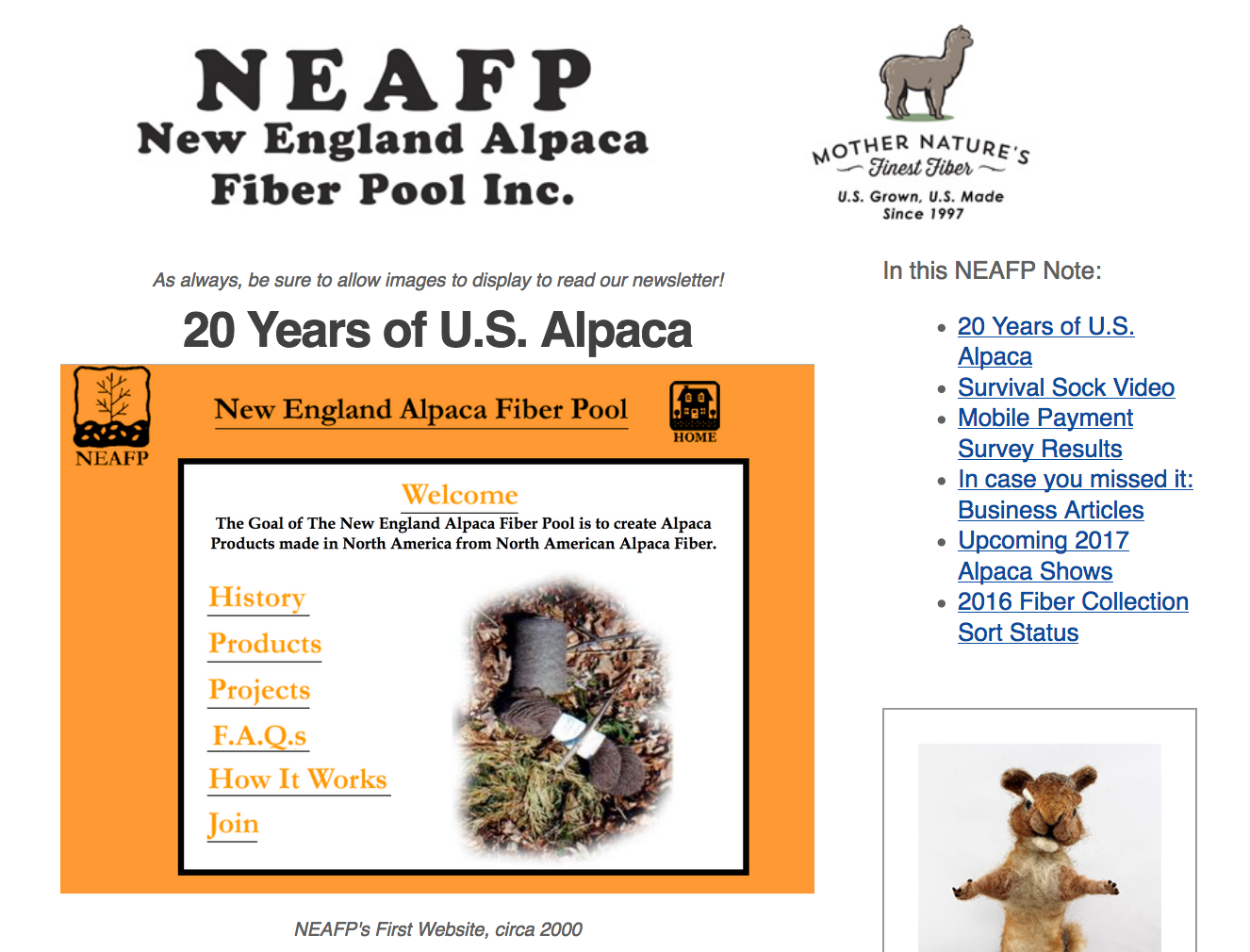
Read the NEAFP Note here: http://eepurl.com/cAqah5
Article: Mobile Payment Survey Results
Mobile Payment Survey Results
by Brianna Paon
First and foremost we’d like to thank everybody who read our Square Mobile Payment Article as well as participated in our Alpaca Store Mobile Payment survey! Your feedback is extremely important to us and we of course wouldn’t be able to be here without the help and support of our customers and their flourishing businesses.
We created this survey partly to help us to gauge how our products are being carried forward into the world of retail, and what is offered in terms of payment methods. As we’ve concluded in that article, one of the most if not the most important favor you can do for your small business is offer the use of credit/debit cards. If you are not offering this payment alternative, you are running the risk of losing business to competitors, even if you have the best product and best overall brand message.
We are living in a time where quickness and convenience coincide with one another―nobody wants to feel like they are wasting their time simply by trying to buy your products and give you money. Judging by the results of the survey, we can conclude that an average of 87% of our customers (you guys!) accept payments through credit and debit cards, and out of that 87% a solid 65% use Square as their POS (Point of Sale) system.
For those who may be a bit skeptical, or think it isn’t necessary or of interest to explore the opportunity of mobile payment usage, I candidly ask you to think again. A loyal customer of ours had said it best, “anyone who doesn’t take credit is leaving money on the table.”
Some other notable survey result quotes:
"Taking credit/debit cards has increased my sales exponentially. I am
also able to offer incentives and discounts to customers online AND as a
thank you to those who have already purchased. I couldn't do the
business I have without using Square. Love it!"
"We find the data collection of the Square system to be a real asset to
our business. Sales tax reporting is a breeze; setup is easy for a non
techie person; information on exactly what sold over any time frame is
invaluable; refund processing is easy. wouldn't be without it."

